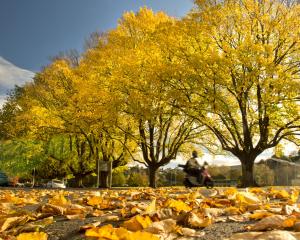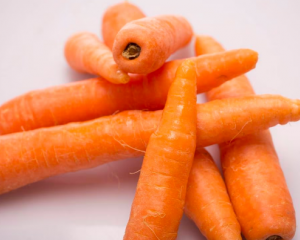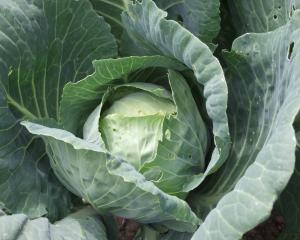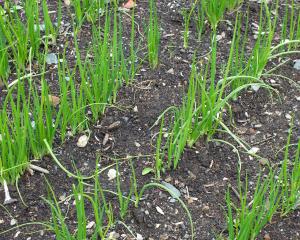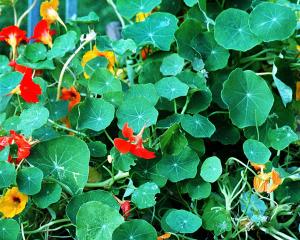
Brassicas (plants of the cabbage family) planted in late December or during January will need protection from white butterfly caterpillars and grey aphids. A dusting of derris dust once a fortnight or after rain will kill caterpillars. An alternative is to make lightweight frames and cover them with plastic mesh of the type sold to protect strawberries. The frames prevent white butterflies from landing on the plants and laying their eggs. Grey aphids are most effectively controlled by insecticides or by planting pyrethrum (Chrysanthemum cinerarifolium) as close as possible to brassicas. Pyrethrum’s insecticidal properties are in the white, daisy-like flowers, not the leaves, so it is important to let plants flower.
In areas where potato blight is found, spraying crops at regular intervals may be necessary.
Onions are ready for harvesting once the leaves start turning brown or drying up. Pull out onions, then place in a sunny place to dry completely. Store them by stringing them in bunches or placing in a single layer on a wire-netting rack. Keep onions in a dry, airy place where they get some light.
Flowers
Freesias, grape hyacinths, fritillarias and bulbous irises — Iris reticulata, juno (I. bucharica), Dutch, Spanish and English types are spring-flowering bulbs to plant now.
Natives of South Africa, freesias enjoy a warm, sunny position with a light soil. They give good results in greenhouses, or in sunny parts of the garden. Freesia alba Burtonii is an attractive cream variety developed in New Zealand.
Grape hyacinths, or matchheads, succeed almost everywhere, increase rapidly and can be naturalised under deciduous plants. There are white and double blue forms, as well as several species, the latter often difficult to obtain. Worth seeking is Muscari macrocarpum, which has purply-brown buds that open to yellow flowers, and M. latifolium, which has violet flowers with blue tips.
Bulbous irises flower over a long period, starting in late winter with the blues and purples of Iris reticulata. I. danfordiae has bright yellow flowers. These irises like light, well-drained soil in full sunshine and will multiply quickly if left to get on with it. Do not buy any of these irises if there are black marks on the outside, as it indicates fungal disease.
Dutch, Spanish and English irises, which flower in that order, grow from 40cm-70cm. Colours vary from deep to light blue, white, yellow and golden brown. For best effect, plant these irises in groups of a dozen or more, 5cm-10cm apart. They enjoy warm, sunny conditions and do best if the soil is kept moist but not waterlogged. They multiply quickly if in a suitable spot.
Lawn clippings are useful for mulching under shrubs such as rhododendrons, azaleas, roses and other surface-rooting plants at this time of the year. Apply them only after the soil has been well watered and do not spread deeper than about 5cm.
Many roses grow well from cuttings put in now. For rambler roses, which will have finished flowering, keep some of the short, green side shoots that have borne flowers. Tear them from the main stem with a heel of the wood attached and insert in pots of moist potting mix. River sand in the mix, which must be kept moist, will help rooting. Trim off the top few centimetres of growth to make the cutting 12cm-15cm long and put half its length below the mix.
Bush rose cuttings can be taken from now until Easter. Pieces from flower-bearing shoots 15cm-20cm long make the best cuttings and can be treated like rambler rose cuttings. Most bush roses do best when grafted on a stock with a more vigorous root system, but many sorts are strong enough to grow and bloom freely on their own roots.
Fruit
Grapes will be showing colour and some close to fully ripe.
An important task at this stage is to keep vines watered until the fruit is about half-ripe and giving liquid manure every week or two before watering.
When grapes are half-coloured, give vines no more water until the fruit has been picked.
Care must be taken to ensure grapes grown in greenhouses have good ventilation, especially once fruit has formed.


